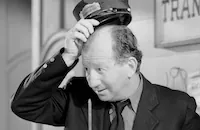The Donovan Affair
Cast & Crew
Frank R. Capra
Jack Holt
Dorothy Revier
William Collier Jr.
Agnes Ayres
John Roche
Film Details
Technical Specs

Synopsis
Jack Donovan, a gambler and philanderer, is marked for death by his creditors when he fails to pay off some debts. Donovan's wanton womanizing results in a tearful visit from Mary Mills, a maid at the Rankin estate, who accuses him of jilting her for her mistress, Lydia Rankin. Donovan's activities engender yet another enemy when Cornish, the suitor of Lydia's daughter Jean, spies Lydia, clad in her daughter's cape, furtively meeting with Donovan, and mistakes Lydia for Jean. One evening, at a dinner party at the Rankin estate, Donovan comes face to face with his antagonists. At dinner, Donovan shows the guests a mysterious eye-shaped ring which is said to glow in the dark and hold strange powers. Mesmerized by the ring, Dobbs, the Rankins' sinister peg-legged gardener, watches from the window as Donovan orders the lights extinguished to demonstrate the power of the ring. When the lights come back on, Donovan is dead, a carving knife plunged into his back. Inspector Killian and his assistant Carney are summoned, and when Killian asks to see the ring, it is discovered missing. A search recovers the ring and reveals that Porter, one of the invited guests as well as the assassin appointed by Donovan's creditors, is carrying a gun. Killian accuses Porter a known criminal, of the murder, but Porter denies the charge and offers to name his own list of suspects when Killian decides to test the ring and orders the lights extinguished. Just as Porter is about to reach his conclusion, he abruptly stops speaking, and the lights are turned back on to reveal Porter's dead body with a carving knife piercing his back. The mystery deepens when a police officer delivers fragments of a letter found in Donovan's apartment. Killian instructs Nelson, the Rankins' butler, to paste the letter back together, but the butler secretly pockets several of the pieces. Because the letter reveals a death threat written in a woman's hand, Killian orders handwriting samples from the assembled women, and Nelson pockets Mary's sample, substituting his own for hers. When the samples prove inconclusive, Killian becomes suspicious of Cornish and accuses him of the crimes. Cornish denies the charge, but agrees to tell what he knows of the affair and asks that the crime be reenacted. As the lights go off, a struggle is heard, and when the lights are turned back on, Killian is restraining Nelson, a carving knife in his hand. Nelson then confesses that he committed the murders, driven by his unrequited love for Mary.

Director

Frank R. Capra
Cast

Jack Holt

Dorothy Revier
William Collier Jr.
Agnes Ayres
John Roche
Fred Kelsey

Hank Mann

Wheeler Oakman
Virginia Browne Faire

Alphonse Ethier
Edward Hearn

Ethel Wales
John Wallace
Crew

Film Details
Technical Specs

Quotes
Trivia
The first all-talkie film released by Columbia Pictures.
Notes
According to modern sources, the original play opened August 30, 1926. A modern source also lists the running time as 80 min. According to a pre-release news item, this film marked Agnes Ayres' return to the screen after a seven-year absence. Modern sources indicate that this picture was filmed at a rented sound studio in Los Angeles in the spring of 1929. This was Capra's first all-talkie film, shot entirely indoors. Titles were written by Howard Green for a silent version to play in theaters not equipped with sound. A note at the beginning asks audiences not to reveal the killer's identity. According to Capra's autobiography, the film was a critical and commercial success. During its shooting, to get around Harry Cohn's cost-conscious rule that only one take could be printed, no matter how many had been shot, Capra began having his players repeat a scene without stopping the cameras, a method he continued to use over the years to obtain the right mood in a scene.












